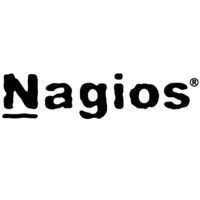Need advice about which tool to choose?Ask the StackShare community!
Ambari vs Nagios: What are the differences?
Introduction
In the realm of IT infrastructure monitoring and management, Ambari and Nagios are two popular tools that serve distinct purposes.
Installation and Configuration: Ambari is specifically designed for managing and monitoring Hadoop clusters, providing a user-friendly interface for cluster provisioning. In contrast, Nagios, being a general-purpose monitoring tool, requires separate configurations for each device and service to be monitored, making the setup process more complex and time-consuming.
Alerting Mechanisms: Nagios offers extensive alerting capabilities for system administrators, including notifications via email, SMS, or custom scripts when a predefined threshold is breached. On the other hand, Ambari focuses more on providing real-time insights into the health and performance of Hadoop clusters, with alert integrations being more limited in comparison to Nagios.
Scalability and Flexibility: Ambari is well-suited for scaling and managing large Hadoop clusters, offering automation features for tasks like adding or removing nodes dynamically. Conversely, while Nagios can also handle large infrastructures, its configuration and management may become cumbersome as the scale increases, requiring additional effort to maintain flexibility.
Graphical User Interface (GUI): One notable difference between Ambari and Nagios is the GUI. Ambari provides a comprehensive web-based dashboard that visualizes the entire Hadoop cluster's status and performance metrics in a user-friendly manner. In contrast, Nagios primarily relies on text-based configuration files and a less graphically intuitive interface for monitoring and managing systems.
Community and Support: Nagios boasts a large user community and a wide range of plugins developed by the community to enhance its monitoring capabilities. Ambari, on the other hand, has a more focused community centered around Hadoop ecosystem users, providing specialized support and resources for Hadoop cluster management.
Integration and Ecosystem: Another key difference lies in the integration capabilities of the two tools. While Nagios supports a variety of third-party integrations and plugins for monitoring different technologies and services, Ambari is specifically tailored for the Hadoop ecosystem, offering seamless integration with components like HDFS, YARN, and Hive, thus providing a more cohesive monitoring solution for Hadoop environments.
Summary
In summary, while Ambari excels in managing Hadoop clusters with ease and providing a specialized monitoring solution, Nagios offers more flexibility and customization options for general system monitoring across diverse infrastructures.
- free open source
- modern interface and architecture
- large community
- extendable I knew Nagios for decades but it was really outdated (by its architecture) at some point. That's why Icinga started first as a fork, not with Icinga2 it is completely built from scratch but backward-compatible with Nagios plugins. Now it has reached a state with which I am confident.
Pros of Ambari
- Ease of use1
Pros of Nagios
- It just works53
- The standard28
- Customizable12
- The Most flexible monitoring system8
- Huge stack of free checks/plugins to choose from1



































